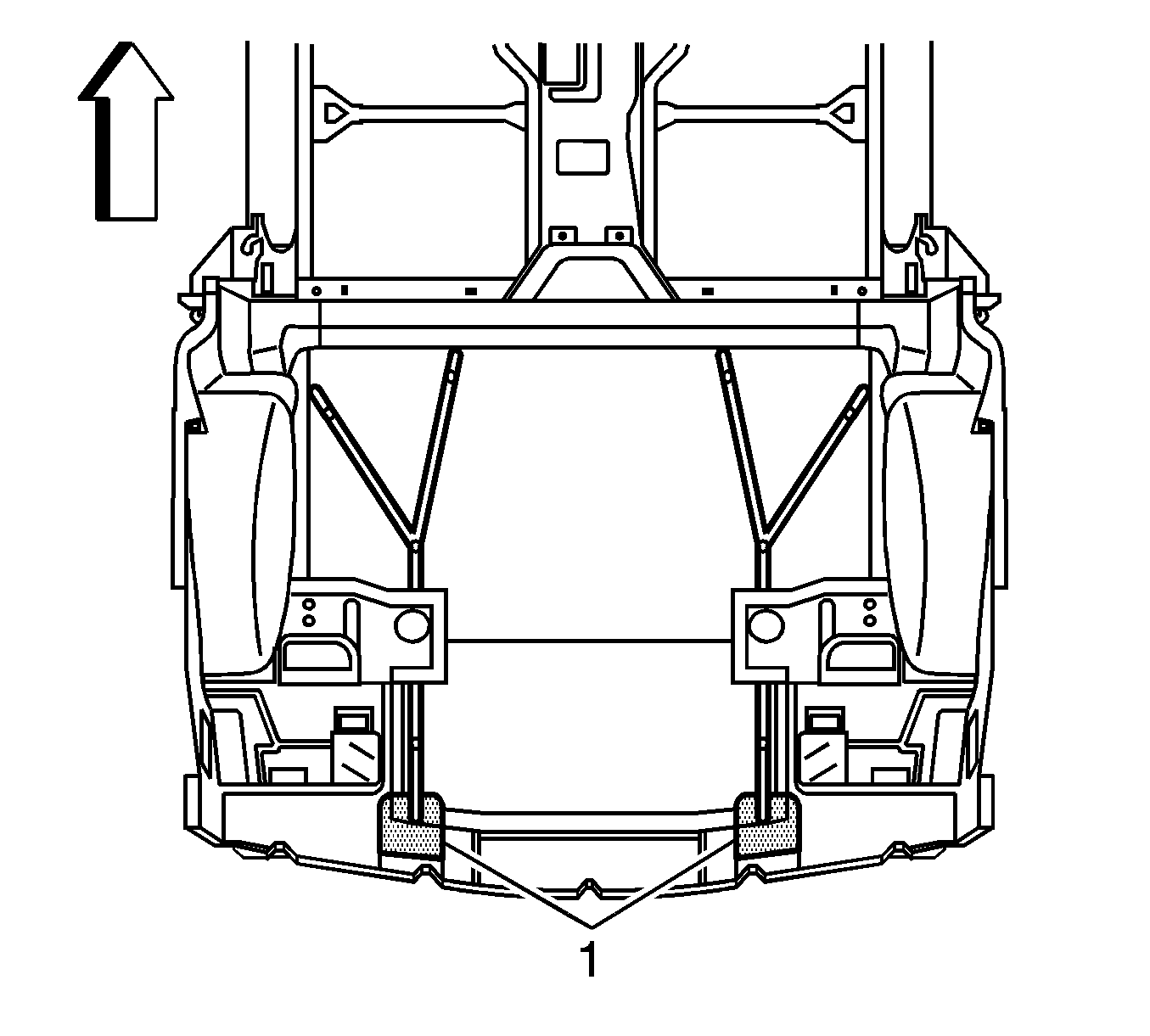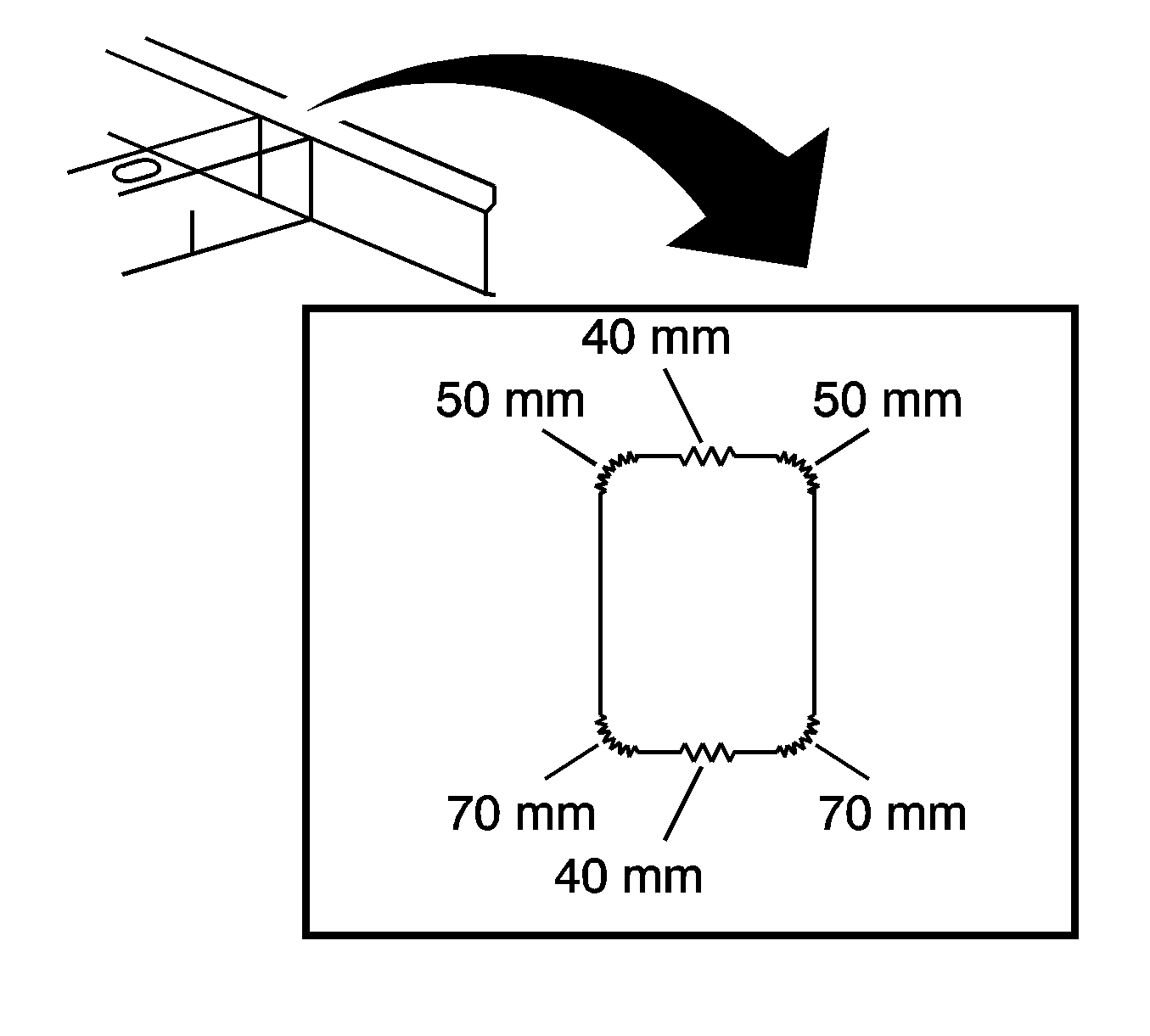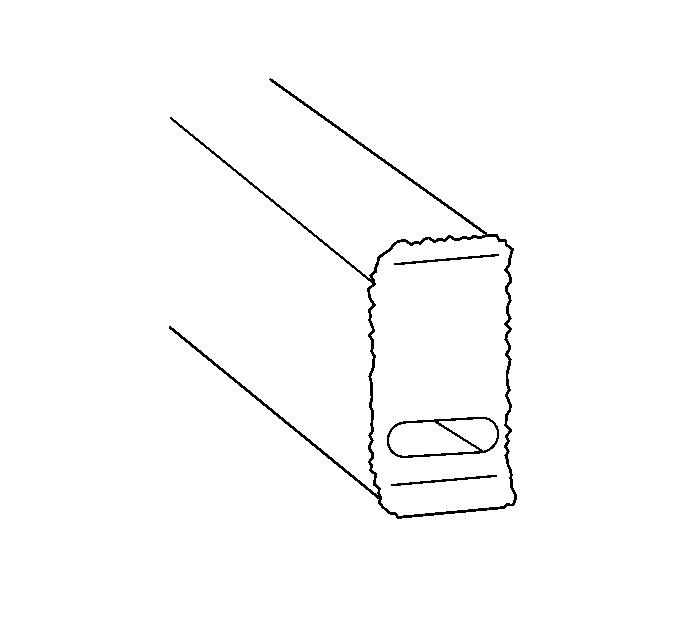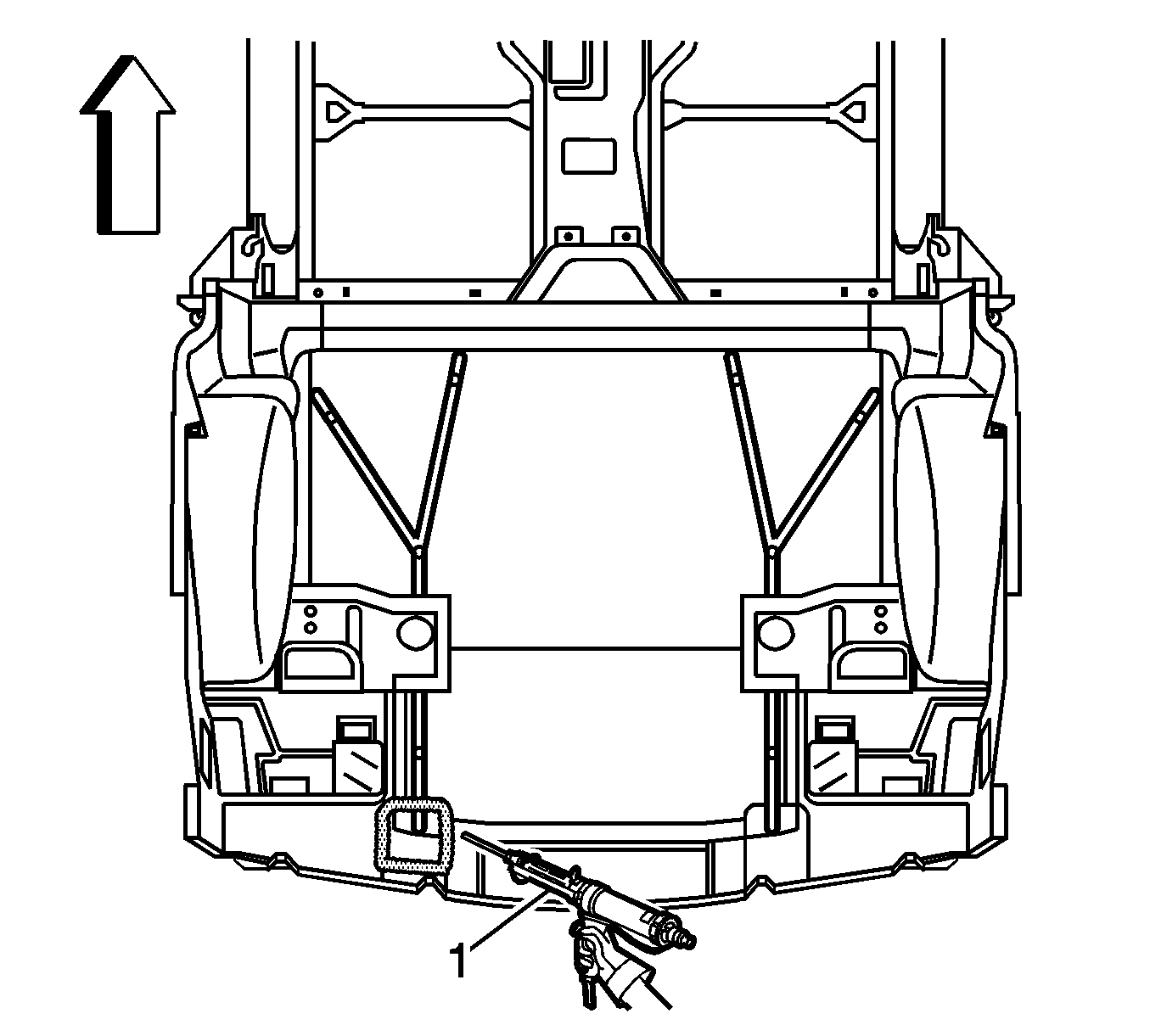For 1990-2009 cars only
Tools Required
J 42058 Frame Adapter Clamp
Removal Procedure
- Disable the SIR system. Refer to SIR Disabling and Enabling .
- Disconnect the negative battery cable. Refer to Battery Negative Cable Disconnection and Connection .
- Remove all related panels and components.
- Remove or reposition the wiring to avoid damage.
- Repair as much of the damage as possible to the factory specifications. Refer to Dimensions - Body .
- Use J 42058 to secure the vehicle if pulling and straightening are required.
- Locate the raised area (1) over the top welds of the rear bar.
- Cut out an access hole (1) over the top welds of the rear bar.
- Save the cut-out piece to patch the hole.
- Note the location and remove the sealers and anti-corrosion materials from the repair area. Refer to Anti-Corrosion Treatment and Repair .
- Apply heat and pry apart to separate the impact bar from the rear compartment panel.
- Cut the welds around the perimeter of the frame rail ends. Cut the welds favoring the impact bar side of the joint.
- Remove the damaged impact bar.
- Extract pieces of the impact bar which are left attached to the rail ends.
- Straighten and deburr the rail ends. Keep the perimeter and shape of the rail ends as original as possible.
Caution: Refer to Approved Equipment for Collision Repair Caution in the Preface section.



Important: Do not cut into the frame rails.

Installation Procedure
- Temporarily position the impact bar for proper fit and alignment.
- Clean and prepare all of the welded surfaces.
- Apply 3M® weld-thru coating P/N 05916 or equivalent as necessary and to the inside of the rail ends.
- Clean and prepare all bonding mating surfaces according to adhesive manufacturer's recommendations.
- Apply a consistent bead of structural adhesive to the top impact bar to bond to the rear compartment panel. Refer to Sheet Molded Compound (SMC) Panel Bonding .
- Position the bumper impact bar to the vehicle using three-dimensional measuring equipment. Refer to Dimensions - Body .
- Using a metal inset gas (MIG) welder, stitch weld the rear bar to the frame rail ends.
- Apply the sealers and anti-corrosion materials to the repair area. Refer to Anti-Corrosion Treatment and Repair .
- Use the original cut-out piece to patch the hole.
- Apply adhesive bonding material as necessary to the repair area of the floor and the patch. Refer to Sheet Molded Compound (SMC) Panel Bonding .
- Position the patch and press firmly into place.
- Smooth out the adhesive around the repaired area.
- Verify that no voids or gaps occur in the adhesive.
- Paint the repair area. Refer to Basecoat/Clearcoat Paint Systems .
- Install all related panels and components.
- Connect the negative battery cable. Refer to Battery Negative Cable Disconnection and Connection .
- Enable SIR system. Refer to SIR Disabling and Enabling .

Important: DO NOT top coat the bonding surface of the rear bar. Use primer only on bonding surfaces. Refer to adhesive manufacturer's recommendations.

Important: If no trace of the original welds are present, follow the pattern specified for welding the side rails to the impact bar.

Important: Balsa wood is sandwiched in between the floor. Because balsa wood will rot when wet, complete sealing of the balsa wood is necessary.
Important: A leak proof seal is necessary so that exhaust and fuel fumes cannot enter the vehicle.
